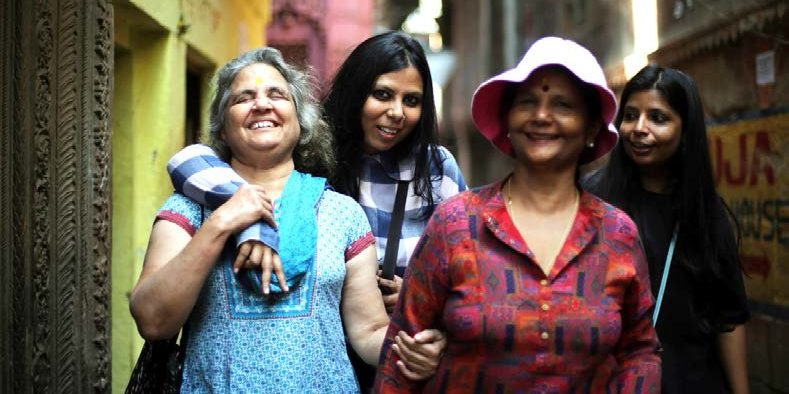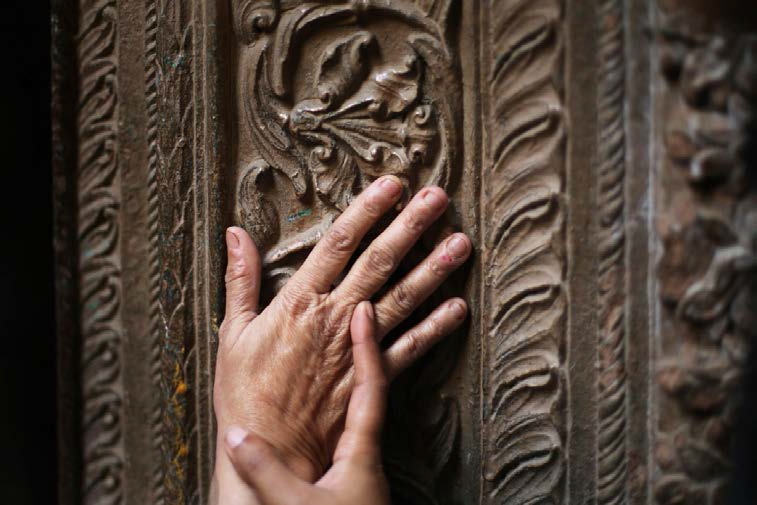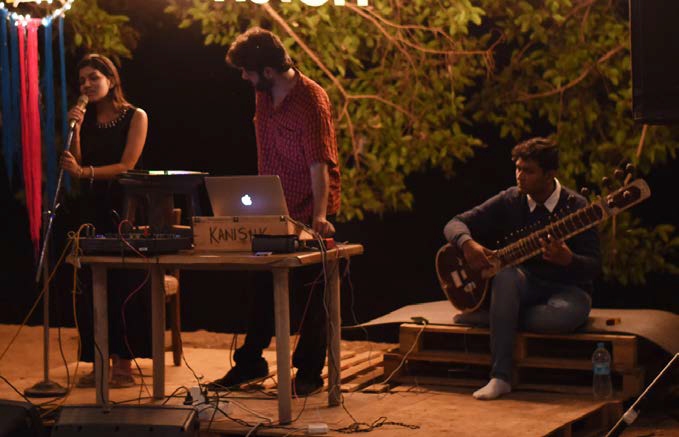Travel Without Limits

The appropriately-named Bat Travels helps the blind go on ‘sightseeing’ trips.
By Asiya Nayeem
Traveling is a passion, a way of life. We’ve all dreamt of going river rafting and walking through quaint towns. Traveling to a new place comes with a burst of excitement. There’s a thrill in planning all the sightseeing spots right before a trip. But a lot of our travel experiences are sight centric. We just can’t enjoy a good trip without engaging our vision.
Or can we?
It was with this limitation that Bat Travels became a reality. When avid travelers Divya Saxena and Ritu Sinha noticed this gaping hole in the travel industry, they started brainstorming on how tours can be more inclusive to the visually impaired without losing the essence of traveling. Over 15 million people in India are visually challenged and the duo at Bat Travels recognized the lack of travel opportunities that this large number of citizens had. Through talking to various visually impaired individuals, they came up with a tour design, a first of its kind. The venture is unique in the sense that when planning a trip, they have to forego a lot of the common sightseeing and visual attractions for a more sensory experience.
Travelers for each trip include both visually impaired and sighted travelers, who are paired up. This is a way for them to help each the visually challenged travelers, in navigating the tour. While such trips were a first for the visually impaired, the experience was also nothing short of extraordinary for the sighted travelers because they imbibed the perspective of their partners and to an extent, seem to learn to be more patient and empathetic.
The first Bat Travel trip was in December 2017 to Rishikesh. This was a much-awaited trip for their visually-challenged travelers, mainly because they aren’t usually allowed to go river rafting. But the team at Bat Travels pulled out all the stops—they got safety instructors and permissions so that every traveler could enjoy the thrilling adventure sport. The team also arranged traditional Garhwali music to enjoy during their bonfire nights at Rishikesh. So how did they work around not using the one crucial sense required for traveling?
“ALTHOUGH THE NUMBER OF CARE CENTRES HAS INCREASED OVER THE YEARS IN URBAN AREAS, THE NEEDS OF THE RURAL POOR REMAIN NEGLECTED.”
Dr M SUBRAHMANYAM
Founder, Sparsh Hospice
“In all our trips in the past months, we’ve had our travelers enjoy the place by touching the architecture, listening to the birds on the bird trail, touching replicas of the animals that reside in the jungle they walk through and engaging their taste buds with the authentic food of that place. The replicas in particularly are very realistic, with grooves and textures that mimic the real-life animals in that jungle. We focus a lot more on hearing, touch, and taste to give travelers a perspective of the place they’re visiting,” explained Sinha.

The venture has definitely impacted people from different walks of life. Visually-impaired travelers have grown to be more independent and the tours have helped them figure out how to travel alone. It’s a massive stepping stone for them and they put their trust in Bat Travels to make this big change in their life. A 30-year-old finally took his first step in traveling alone with the team and he made his journey to the place where they were starting the tour all by himself. The kind of preparation and strength that this requires is massive and the team reiterated how surprised and marveled they were by his actions. The duo at Bat Travels also mentioned that many young parents bring their children, exposing them at such a young age.
The founders were surprised by the amount of curiosity and liveliness that the visually impaired travelers had. In one instance, at Varanasi, one of their visually impaired travelers was walking and didn’t pay heed to a snake that was kept as a show for tourists. When she was warned about the snake, instead of being hesitant and frightened like people usually are, she expressed that she wanted to touch the snake. In the end, the snake charmer helped her pet the snake.
“We have more plans in the future,” remarked Saxena. “We hope to introduce these trips to schools, so we can reach a younger audience. The younger they are, the more empathetic and understanding they will be. Moreover, kids who are visually challenged wouldn’t have to face difficulty in going for the trip. But of course, all of this is in the far future.”
Since theirs is a small team, they have had difficulty in planning more than one trip each month but they are hopeful about expanding in the near future, especially since the response has been overwhelmingly positive.
The founders also said that their immediate plans are to have two trips a month. Since theirs is a small team, they have had difficulty in planning more than one trip each month but they are hopeful about expanding in the near future, especially since the response has been overwhelmingly positive. Bat Travels is only a few months old but it is already making waves and breaking myths. From Rishikesh, Varanasi and such small tours, they hope to plan bigger tours and make a larger ripple, even going international. With its intentions in the right place, the venture is slowly bridging gaps between people and shattering barriers, making the most well-loved activity, traveling, a hobby that can be enjoyed by all.

















